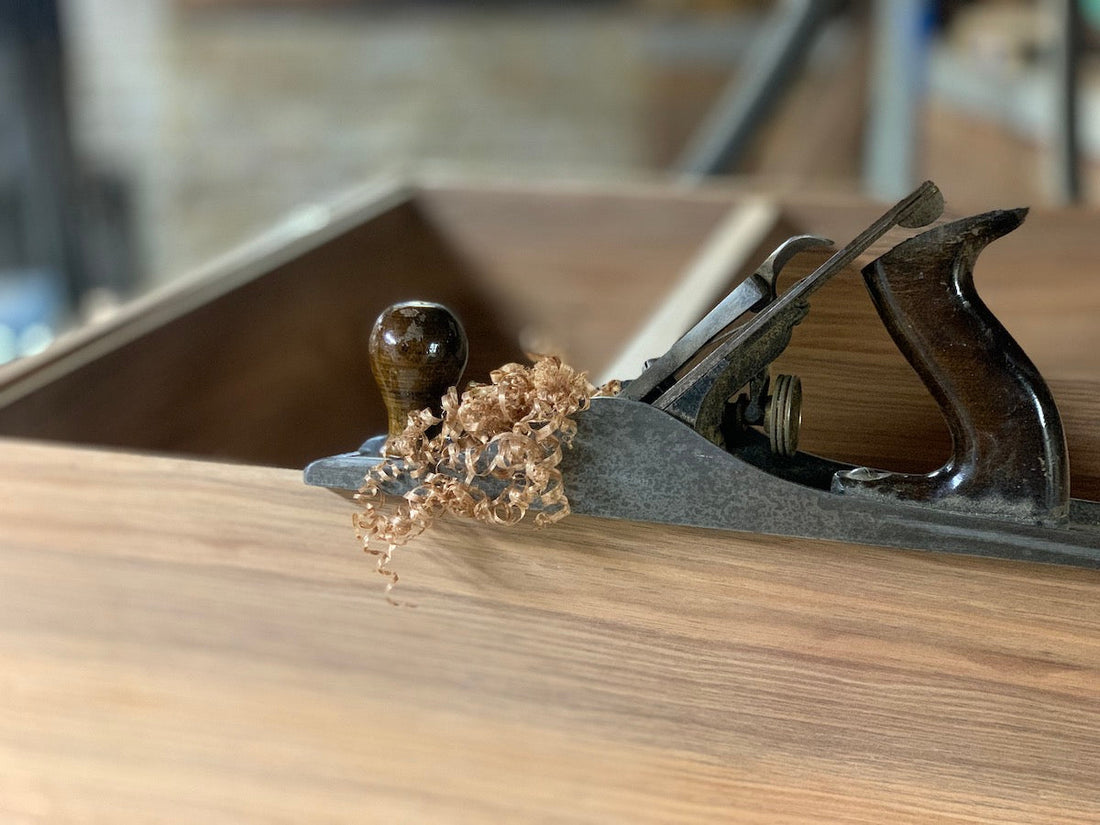I was recently asked to design and make a record player cabinet. My client, Rob, is somewhat musical - he loves guitars, drums, bands and….he loves his records too.
Rob shared some initial hand sketches to get the ball rolling and from there we collaborated on designs until he was ready to move forward.


Design
Design is all about context. It’s one thing to design and make something but unless I understand its wider context, the item may fail its purpose.
Like all projects, I’ll begin by understanding dimensions, intent of use, intended placement, must-haves, nice-to-haves, preferred timber, examples seen, and an understanding of other external influences, like family members. To expand a little:
- Dimensions: Height, Width, Depth
- Intent of use: to store records, speakers and a record player
- Placement: a particular nib in the loungeroom that is influencing the dimensions. The legs need to miss the skirting board in order to sit flush against the wall.
- Must-haves: dimensions, designated areas, and holes in the back for cords.
- Nice-to-haves: optional area to hold the records that are in current rotation.
- Timber preference: American Walnut is the preference.
- Other: there are little people (a young boy) in the home, so whilst the cabinet will no doubt be out of bounds, the cabinet needs sturdy legs so that it can’t easily be pulled over.
- Examples: a series of examples with varying features (see below)

We exchanged drawings and photos (as above) and then I prepared a range of 2D and then 3D drawings to showcase varying options that deliver on the brief. A 3D model really helps to contextualise the product before it’s made. Once this is approved, the making can begin.

Timber Selection
Rob's original preference was American Walnut timber however when we looked at lineal meter prices we started to consider other options first. We landed on Tasmanian Blackwood which is an Australian species that is similar to Walnut. It's a stunning furniture-grade Australian variety that is every bit as good as any timber you’ll find around the world (IMO).
As you know, I love environmentally sound choices in the timber I use. For me, the priority is reclaimed, recycled and salvaged timber. I’ll do a separate blog post on these but in brief:
Recycled: old timber that is reused without manufacture
Reclaimed: old timber that is reused and manufactured
Salvaged: a tree that has fallen and milled for reuse
I managed to source some stunning Blackwood down in the Shoalhaven from a tree said to be more than 200 years old. The timber had been stored in another furniture maker's collection for more than 20 years before that person retired. I feel very fortunate to have found this timber.

I’ve matched the Tasmanian Blackwood cabinet carcass with some leftover Tasmanian Oak plywood as the backing. It creates a beautiful contrast between the timbers.
Making
It didn’t take me long to fall more in love with this grain. As soon as it goes through the planer and thicknesser the grain really stands out.

Before Machining

After Machining

Timber glue-up
Making the cabinet was relatively simple, made easier by my choice of electric and hand tools which always deliver on quality.

Using my grandfather's hand planer

Reliable old chisels

Festool for precise joins
Having a background in digital design gives me the advantage of being somewhat savvy with digital platforms. In the furniture-making space, I use a 3D design platform to plan and visualise my designs before making anything. Then when I am making I can be very precise, time efficient and intentional with my decisions.

3D model designs guide my making

Precise planning with 3D models

Plans and actual cabinet
I made a design decision to keep the single lengths of timber as connected in its future life as possible, despite being separated by a rebate joint. If you study the cabinet from afar, the grain is continuous from one side of the cabinet to the other - a simple feature that will carry the eye across each length of timber and make it appealing from every vantage point.
I’m sure this record player cabinet will provide a lifetime of love to Rob and his family.






